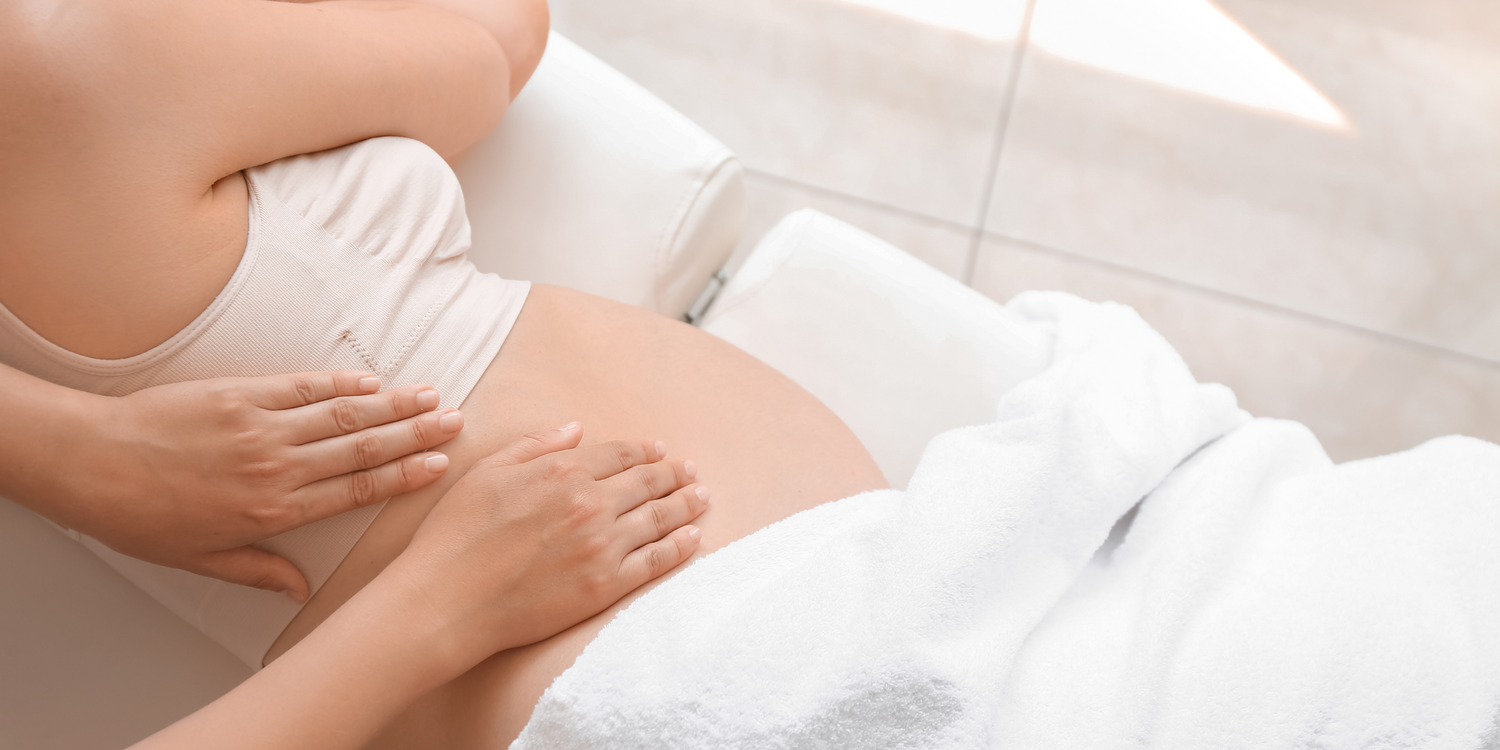Key Takeaways
- Exercise and massages can work wonders during pregnancy - they boost your fitness, alleviate discomfort and prepare you optimally for the birth.
- In this article, you will find out which sports are particularly suitable, how to exercise safely and which massage techniques are good for you and your baby.
- With valuable tips and safety advice, the guide shows you how you can enjoy this special time in an active and relaxed way.
Are you pregnant and wondering if exercise and massage are suitable for you? Exercising during pregnancy has a positive impact on your health and that of your baby. Regular physical activity can help you stay fit, alleviate discomfort, and prepare you for childbirth. Massages can also promote relaxation and enhance your well-being.
In this guide, you’ll learn more about the benefits of exercise during pregnancy and which sports are particularly suitable. You will get important safety tips for training and learn how massage as a complementary therapy can enrich your pregnancy. From swimming to Pilates to pelvic floor exercises, we show you how to stay active and relaxed during this special time.
Benefits of Exercise During Pregnancy
Exercising during pregnancy can positively affect your health and your baby’s. Regular physical activity supports your body during this special time and offers numerous benefits.
Improving Fitness
Regular physical activity can help maintain or even improve your fitness during pregnancy. This positively affects your cardiovascular system and strengthens your muscles. Sports that engage large muscle groups, such as walking, Nordic walking, or cycling at a moderate pace, are especially suitable. These activities help enhance your well-being and endurance.
Alleviating Pregnancy Discomfort
Exercise can relieve or even prevent common pregnancy discomforts. Regular activity can reduce nausea, back pain, and circulation problems. Gentle movements and light muscle exercises can support your body and help prevent issues like varicose veins. Additionally, exercise can help you avoid excessive weight gain during pregnancy.
Preparing for Childbirth
Physical activity during pregnancy can positively influence the birth process. A study showed that pregnant women who exercised moderately aerobically for one hour three times a week had almost an hour shorter total labor duration (450 vs. 507 minutes) compared to a control group without regular exercise. Exercise strengthens the pelvic floor and abdominal muscles, making delivery easier.
Exercises for the pelvic floor and back are especially recommended, as they also prepare you for childbirth. Specialized classes like prenatal yoga can also optimally prepare you for your child’s birth.
To benefit from these advantages, it is important to be active at least three times a week for at least half an hour. You should not overexert yourself and focus on maintaining rather than increasing your fitness level. Suitable sports include swimming, aqua fitness, low-impact aerobics, gymnastics, and Pilates.
Suitable Sports for Pregnant Women
Swimming and Water Aerobics
Swimming and water aerobics are ideal sports for pregnant women. In the water, you feel light and flexible, which is especially pleasant in advanced pregnancy. The buoyancy of the water relieves your joints and reduces the risk of injury. Aqua fitness and swimming train your cardiovascular system and prepare you well for childbirth.
In the first two trimesters, you can practice all four swimming styles. From the 20th week of pregnancy, however, backstroke and butterfly swimming are no longer recommended. Experts recommend at least 30 minutes of exercise five days a week. Pool water is safe for you and your baby due to chlorination.
Yoga and Pilates
Yoga and Pilates are gentle yet effective training methods for pregnant women. Both sports strengthen your muscles, improve your posture, and promote mental relaxation. Pilates particularly focuses on strengthening the abdomen, pelvic floor, and back, which can prevent poor posture and back pain.
Both yoga and Pilates can be adapted to the needs of pregnant women. As pregnancy progresses, it is advisable to attend a specialized prenatal class. These classes incorporate birth-preparatory elements, and the exercises are specifically designed for pregnant women.
Light Strength Training
Contrary to previous beliefs, moderate strength training during pregnancy is possible and even recommended. It helps you stay fit and prepares you for physical changes. It is important to adjust the intensity and not push yourself to your limits.
Suitable exercises include squats, lunges, push-ups on the knees, rowing, and bicep curls. Strengthening the back muscles is especially important to stabilize the extra weight of your growing belly. From the second trimester, you should avoid exercises that engage the straight abdominal muscles, such as sit-ups or planks.
Regardless of the chosen sport, it is important to listen to your body and consult your midwife or gynecologist if in doubt. Regular exercise during pregnancy can reduce the risk of gestational diabetes, decrease water retention, and positively affect the birth process.
Safety Guidelines for Exercise During Pregnancy
Consult with Healthcare Providers
Before starting a sports program during pregnancy, it is important to consult with your doctor or midwife. They can advise if there are any contraindications to your planned activities, especially if you have a high-risk pregnancy or certain medical conditions.
Adjust the Intensity
During pregnancy, it is important to adjust the intensity of your physical activities. Experts recommend 30 minutes of physical activity five days a week. You should not push yourself to your physical limits but take it easy. A good rule of thumb is that you should be able to carry on a conversation while exercising without becoming breathless.
The recommended heart rate during exercise should be between 125 and 155 beats per minute, depending on age and fitness level. If you don’t use a heart rate monitor, you can follow the rule of thumb: as long as you can talk normally without getting out of breath, you’re fine.
Pay Attention to Body Signals
It is crucial to pay attention to your body’s signals while exercising. If symptoms such as dizziness, nausea, weakness, or pain occur, these are clear signs that your body needs rest. In such cases, you should elevate your feet and relax.
Other warning signs for which you should immediately stop exercising and possibly seek medical advice include:
Shortness of breath
Headaches
Eye flashes
Bleeding
Lower abdominal pain
Premature contractions
Also, note that certain sports should be avoided during pregnancy. These include sports with a high risk of falling, such as horseback riding, skiing, or climbing, as well as sports with jolts or quick stop-and-go movements like running, trampoline jumping, or ball sports.
By following these safety guidelines, you can enjoy the benefits of exercise during pregnancy while protecting your health and your baby’s.
Massage as a Complementary Therapy
Benefits of Pregnancy Massage
Massage can be a valuable complementary therapy during pregnancy, offering numerous benefits for your physical and emotional well-being. A professionally performed pregnancy massage can help relieve tension, stimulate metabolism, and lift your mood. Many women report improved sleep quality, reduced swelling in hands and feet, and a reduction in anxiety.
Massage can be particularly helpful in relieving back and neck pain, which often results from the changed posture during pregnancy. It can also stimulate circulation and the lymphatic system, which relieves veins and reduces swelling in the extremities.
Suitable Massage Techniques
There are several massage techniques suitable for pregnant women:
Pregnancy Massage: This specially adapted massage form focuses on relieving pregnancy-related discomfort.
Swedish Massage: Gentle, long strokes and kneading help improve circulation and relieve tension.
Lymphatic Drainage: This gentle technique can be especially helpful for swollen legs and feet.
Reflexology: Focuses on specific pressure points on the feet, hands, and ears, with certain points to be avoided.
Precautions
Although massages can offer many benefits during pregnancy, some precautions must be taken:
Always consult your doctor or midwife before a massage, especially if you have a high-risk pregnancy.
Choose a well-trained massage therapist who is familiar with the specifics of pregnancy physiology.
Avoid massages in the first trimester or use very gentle techniques only.
Certain massage forms like deep tissue massage, Shiatsu, or Thai massage should be avoided.
Be cautious with essential oils, as some can induce contractions.
Pay attention to warning signs like dizziness, nausea, or pain, and end the massage if necessary.
By taking these precautions, you can safely enjoy the benefits of pregnancy massage and enhance your well-being during this special time.
Medically Reviewed
This text was created by medical editors on the basis of specialist medical literature and current studies. Our aim is to work scientifically, identify sources and regularly check that the content is up to date.
References & Literature
- American Pregnancy Association: Prenatal Massage Therapy
- Expert Rev Obstet Gynecol. 2010 Mar; 5(2): 177–181, Tiffany Field: Pregnancy and labor massage
- Iran J Nurs Midwifery Res. 2016 May-Jun; 21(3): 331–336, Mahboobeh Aalami, et al.: The effects of progressive muscular relaxation and breathing control technique on blood pressure during pregnancy
You might also be interested in these articles
Schwangerschaft
Pregnancy and breastfeeding: Can I get pregnant while breastfeeding?8 Min. Lesezeit
Kinderwunsch
TSH levels and the desire to have children: the role of the thyroid gland in fertility11 Min. Lesezeit





